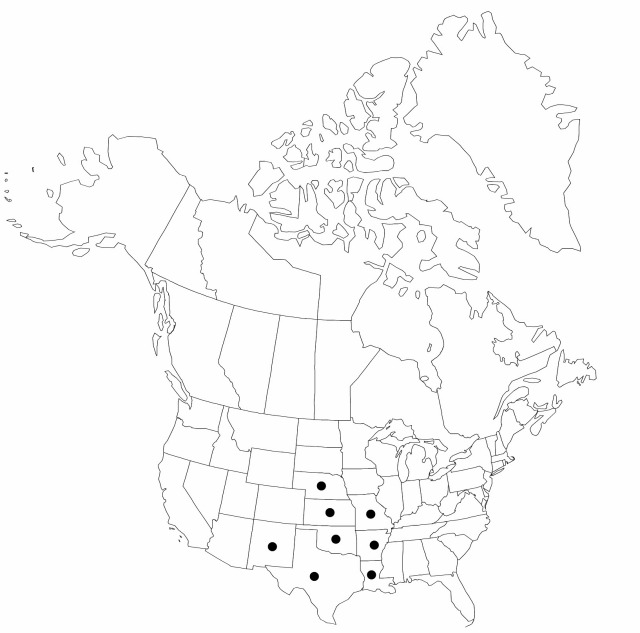Difference between revisions of "Fuirena simplex"
Eclog. Amer. 2: 8. 1798.
FNA>Volume Importer |
imported>Volume Importer |
||
| Line 6: | Line 6: | ||
|place=2: 8. 1798 | |place=2: 8. 1798 | ||
|year=1798 | |year=1798 | ||
| + | }} | ||
| + | |special_status={{Treatment/ID/Special_status | ||
| + | |code=W1 | ||
| + | |label= | ||
| + | }}{{Treatment/ID/Special_status | ||
| + | |code=F | ||
| + | |label=Illustrated | ||
}} | }} | ||
|basionyms= | |basionyms= | ||
| Line 43: | Line 50: | ||
-->{{Treatment/Body | -->{{Treatment/Body | ||
| − | |distribution= | + | |distribution=Ark.;Kans.;La.;Mo.;N.Mex.;Nebr.;Okla.;Tex.;Mexico;West Indies;Central America;n South America. |
|discussion=<p>Varieties 2 (2 in the flora).</p> | |discussion=<p>Varieties 2 (2 in the flora).</p> | ||
|tables= | |tables= | ||
| Line 73: | Line 80: | ||
|basionyms= | |basionyms= | ||
|family=Cyperaceae | |family=Cyperaceae | ||
| − | |distribution= | + | |distribution=Ark.;Kans.;La.;Mo.;N.Mex.;Nebr.;Okla.;Tex.;Mexico;West Indies;Central America;n South America. |
|reference=None | |reference=None | ||
|publication title=Eclog. Amer. | |publication title=Eclog. Amer. | ||
|publication year=1798 | |publication year=1798 | ||
| − | |special status= | + | |special status=W1;Illustrated |
| − | |source xml=https:// | + | |source xml=https://bibilujan@bitbucket.org/aafc-mbb/fna-data-curation.git/src/bb6b7e3a7de7d3b7888a1ad48c7fd8f5c722d8d6/coarse_grained_fna_xml/V23/V23_50.xml |
|genus=Fuirena | |genus=Fuirena | ||
|species=Fuirena simplex | |species=Fuirena simplex | ||
Revision as of 21:34, 27 May 2020
Herbs annual or perennial, mostly cespitose; rhizomes present or absent, if present without cormose buds. Culms tufted or widely spaced, erect to leaning, culm tips hispid-hirsute, internodes glabrous proximal to inflorescence. Leaves: sheaths at culm base or apex sometimes hairy, sheaths at or toward midculm usually glabrous; principal blades linear or lance-linear, flat, 5–20 cm, hispid-ciliate, abaxially hispid, pilose, or glabrous, adaxially glabrous to pilose. Inflorescences of spikelets in clusters 1–3(–5). Spikelets ovoid, lance-ovoid, or cylindric, 8–15(–20) mm, apex acute; fertile scales obovate or oblong, 2–3.5 mm; cusp spreading-excurved, 2/3 or more length of scale; evident ribs 5–7, central 3 convergent to cusp. Flowers: florets 2–3 mm; perianth bristles reaching base of perianth blades or beyond, retrorsely barbellate (sometimes with narrow blades); perianth blades with long claw, ovate, rounded or retuse, rarely acute, apically or subapically bristled, bristle erect or incurved, short to elongate, retrorsely scabridulous; anthers 1–3, 0.5–1.2 mm. Achenes: stipe and beak nearly as long as fruit; body angles pale, faces deep glossy brown, red-brown, or yellow, 1 mm; beak tip narrow, usually papillose.
Distribution

Ark., Kans., La., Mo., N.Mex., Nebr., Okla., Tex., Mexico, West Indies, Central America, n South America.
Discussion
Varieties 2 (2 in the flora).
Selected References
None.
Key
| 1 | Plants perennial; anthers 0.9–1.2 mm. | Fuirena simplex var. simplex |
| 1 | Plants rhizomatous, usually annual; anthers 0.5– 0.6 mm. | Fuirena simplex var. aristulata |